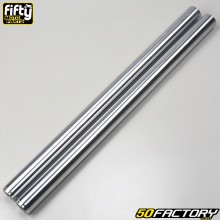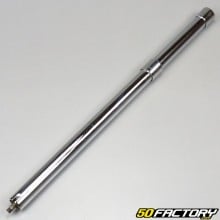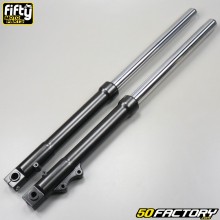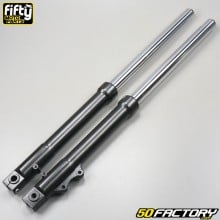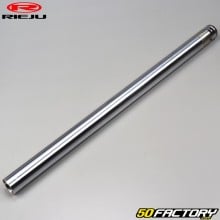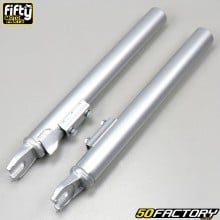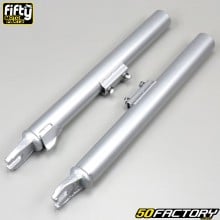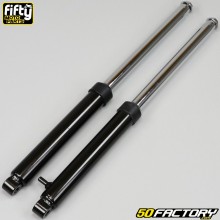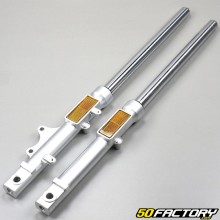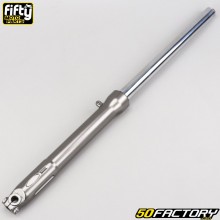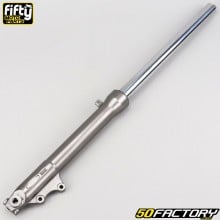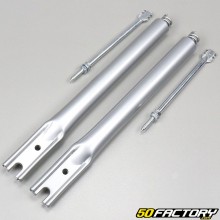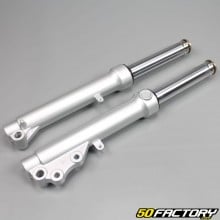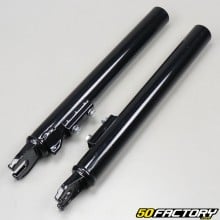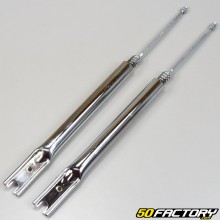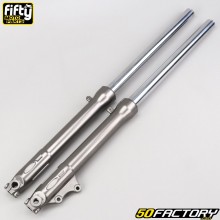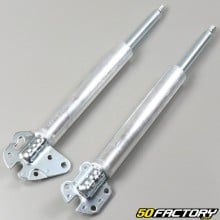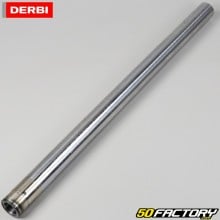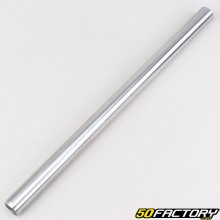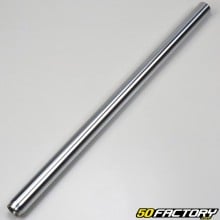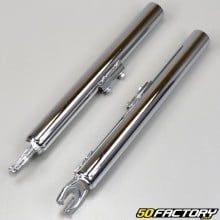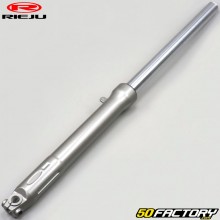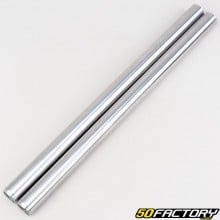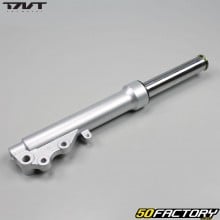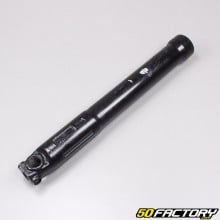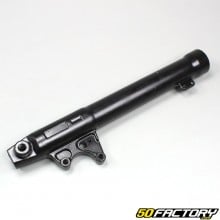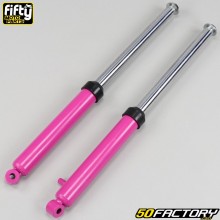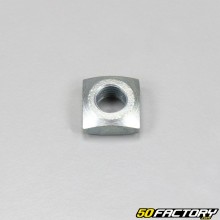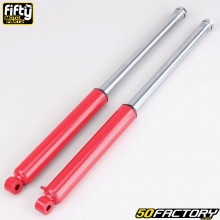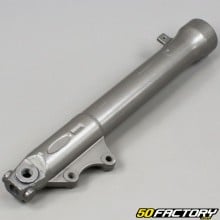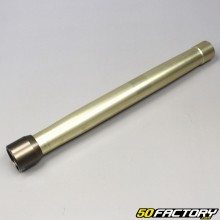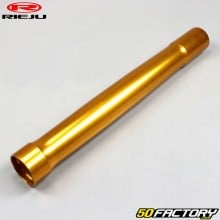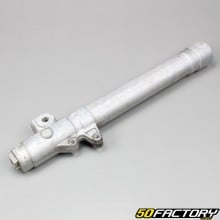 Suspension Fork
Suspension Fork
-
- IN STOCK10,00 €
-
-
- IN STOCK88,40 €
-
- IN STOCK25,10 €
- IN STOCK59,40 €
- IN STOCK59,40 €
- STOCK EXHAUSTED82,30 €
- IN STOCK99,00 €
- IN STOCK99,00 €
- IN STOCK121,90 €
- IN STOCK24,40 €
- STOCK EXHAUSTED85,70 €
- STOCK EXHAUSTED24,60 €
- IN STOCK59,40 €
- IN STOCK24,40 €
- IN STOCK198,00 €
- IN STOCK24,60 €
- IN STOCK42,30 €
- IN STOCK59,40 €
- IN STOCK160,40 €
- IN STOCK30,90 €
- IN STOCK190,90 €
- IN STOCK26,70 €
- IN STOCK26,20 €
- IN STOCK178,60 €
- IN STOCK58,71 €
- STOCK EXHAUSTED-54% 103,30 € 47,52 €
-
- IN STOCK35,00 €
- IN STOCK60,30 €
- IN STOCK59,40 €
- STOCK EXHAUSTED59,40 €
- IN STOCK1,00 €
- IN STOCK59,40 €
- IN STOCK58,00 €
- IN STOCK32,00 €
- IN STOCK25,00 €
- IN STOCK-71% 102,00 € 29,58 €
- IN STOCK35,00 €
Understanding the role of the fork arm
Importance of this part in the suspension
An essential replacement part, the fork slider is designed to ensure the strength and stability of the front fork of your vehicle.
It is part of the suspension of your two-wheeler. It accommodates the shock absorber and the part of the fork which slides, and is fixed on one side to the wheel, on the other to the frame of your vehicle. It therefore powers the up and down movement of the wheel, allowing it to adapt to various irregularities in the road.
The fork leg also plays a crucial role in guiding the wheel. Indeed, if it is misaligned, this can cause the wheel to drift and impact the stability of the vehicle.
You must therefore be careful to choose a quality fork leg, designed in a durable and wear-resistant material, such as steel, to guarantee the longevity of your two-wheeler.
Effect on vehicle handling
The fork leg has a direct impact on the handling of your vehicle. If it is of poor quality or poorly maintained, this can cause problems with the wheel's adhesion to the road, and impact par at the same time your safety. Indeed, a fork leg in good condition allows you to maintain control of your vehicle even on rough roads, and ensures optimal road holding.
The different existing types
For motorcycles
There are different types of fork sliders on the market, suitable for each type of motorcycle. For motorcycles, they are generally longer and more robust than those of other types of two-wheelers, to be able to support the weight and speed of the motorcycle. In addition, they can be equipped with different adjustment systems, to allow motorcyclists to personalize their suspension according to their riding style and the type of road they take.
For scooters
On the other hand, for scooters they are generally shorter and lighter than those for motorcycles. They are designed to be easy to maneuver and maintain, in line with typical urban use of scooters. However, despite their small size, they must still be strong and durable, to guarantee driver safety.
For mopeds
Fork arms for mopeds are similar to those for scooters in terms of dimensions, but may differ in size.ar their technical characteristics. Indeed, mopeds have particular requirements in terms of suspension, due to their hybrid nature.ride between the bicycle and the motorcycle. Therefore, it is important to choose a fork arm adapted to your type of moped, to guarantee optimal operation of your vehicle.
How to choose the right fork leg for your vehicle?
Choice based on vehicle type
Each type of vehicle has specific needs. It is therefore essential to choose a fork arm adapted to your vehicle to get maximum performance. To do this, be sure to check the model and type of your vehicle before making your purchase.ar the dimensions and technical characteristics of the fork arm may vary from one vehicle to another.
Take into account the make and model of your vehicle, car Some fork tubes and sliders are specifically designed for certain makes and models of vehicles. In addition, the size of the machine, the weight, the engine capacity and the use you make of it (urban, competition, off-road) are also selection criteria.
Choice based on vehicle use
If you use your vehicle for long highway journeys, a rigid fork leg will be more suitable. On the contrary, if you use it more urbanally, choose a more flexible fork leg, which will allow better shock absorption. If you plan to venture into rough terrain, opt for a fork leg specifically designed for off-road use. The important thing is to assess your needs and find the fork leg that matches them.
Installing this essential part
Preparation and necessary tools
To install a fork leg, you will need a few specific tools, such as a socket wrench, Phillips screwdriver, wire brush, and fork oil. It is also recommended that you have your vehicle's manual, which can provide you with specific instructions on installing the fork leg.
Detailed installation guide
Start par remove the old fork leg, being careful not to damage the other suspension components. Next, clean the mounting area with the wire brush to remove any trace rust or dirt.
Then proceed to install the new fork leg. Make sure it is aligned with the rest of the suspension, and tighten the bolts securely to secure it. Once the fork leg is installed, check that the fork oil is at an appropriate level, and adjust if necessary.
Finally, take the time to verify the installation by performing a test drive. Make sure the suspension is working properly and there are no suspicious noises.
Care instructions
Tips for effective maintenance
Proper maintenance extends its lifespan and ensures the proper functioning of your vehicle. It is recommended to regularly check the condition of the fork legs and clean them to prevent the accumulation of dirt and rust and to change the fork oil regularly.
Additionally, it is important to check the fasteners and ensure that they are still tight. Finally, do not hesitate to consult your vehicle manual for maintenance advice specific to your model.
Signs of wear and replacement
If you notice cracks, deformation or signs of corrosion on the fork, or if the wheel guidance is not optimal, it is probably time to replace the fork leg.
Wear of this element can also result inar degradation of suspension performance, reduced handling or abnormal tire wear. In any case, it is best to replace the arm as soon as possible to avoid damaging other components of your vehicle.
On the other hand, in the event that your motorcycle has fallen or collided with an obstacle or another vehicle, it is essential to carry out a serious check. It is very unwise to drive after a fall, even at low speed, without having checked that nothing has been damaged. Following the inspection of the fairing, handlebars and controls (levers, selector and brake and clutch pedal), it is important to pay particular attention to the fork of your motorcycle. Even if it falls on its side, it is possible that it is distorted without it being obvious to you.
Conclusion:
In short, the fork leg is more than a simple metal part; it is an essential component of your two-wheeler which influences its performance and driving comfort. Hence the importance of choosing a good quality fork leg, maintaining it properly and replacing it as soon as it shows signs of wear or after an impact or accident. By doing this, you will not only preserve the good health of your vehicle, but also your own safety.
Remember to check the other categories of fork and shock to find all your parts:damper,Arm, full fork, fork oil, fork spi seal, internal fork parts, enhances, fork bearing, fork bellows, fork tee and parts.



























